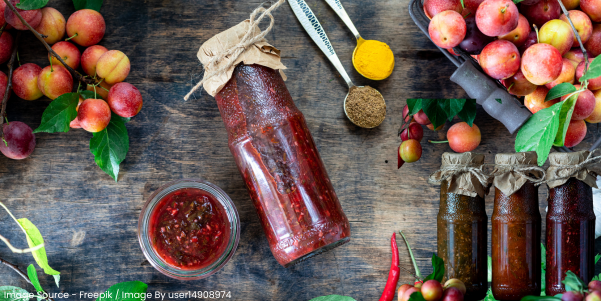If you’re looking to enhance your culinary skills, learning how to make fermented hot sauce at home is a fantastic way to start. This step-by-step guide will show you how to create a delicious, probiotic-rich hot sauce using simple ingredients and a bit of patience. Whether you’re a beginner or an experienced home cook, this guide on fermenting chili peppers for hot sauce will help you achieve a flavorful condiment that adds a unique depth to any dish.
Fermentation is a traditional method of food preservation that also enhances flavors. In this guide, you’ll discover how to use various chili peppers—such as serrano, jalapeno, or a mix—to craft an easy homemade fermented hot sauce recipe for beginners. The process involves fermenting the peppers to develop complex flavors and then blending them into a smooth sauce. You’ll also learn how long to ferment hot sauce for the best flavor and how to make adjustments based on your taste preferences.
Table of Contents
Ingredients
- 1 pound chili peppers: Choose from serrano, jalapeno, or any chili peppers you prefer. For a complex flavor, you can mix different types of peppers.
- 1 quart unchlorinated water: Essential for the fermentation process as chlorine can inhibit good bacteria.
- 3 tablespoons salt: Use non-iodized salt like sea salt or kosher salt to avoid additives that might interfere with fermentation.
- ½-1 cup white wine vinegar: This adds acidity to the sauce and can be adjusted based on your taste preference.
Equipment
- Fermentation jar or mason jar: Ideal for creating an anaerobic environment necessary for fermentation.
- Food processor or blender: To blend the fermented peppers into a smooth sauce.
- Sieve (optional): For straining out any solids if you prefer a smoother texture.
- Zip lock bag: To keep the peppers submerged under the brine during fermentation.
Step-by-Step Guide
1. Prepare the Peppers

Start by thoroughly washing your chili peppers. For this recipe, you can use serrano peppers for their medium heat or mix various types to suit your taste. Remove the stems and chop the peppers into small pieces. If you prefer extra heat, keep the seeds. Pack the chopped peppers tightly into your fermentation jar, leaving about an inch of headspace.
2. Make the Brine
In a large bowl, mix 1 quart of unchlorinated water with 3 tablespoons of salt. Stir the mixture until the salt is fully dissolved. Pour the brine over the peppers in the jar, ensuring they are completely submerged. To keep the peppers from floating above the brine, place a zip lock bag filled with water on top of them.
3. Ferment the Peppers
Cover the jar with a lid or use an airlock if available. Store the jar in a cool, dark place, away from direct sunlight. Ideal fermentation temperatures are between 55-75°F. The peppers will begin to ferment within 1-2 weeks. During this period, check the jar daily and “burp” it by loosening the lid slightly to release any gas buildup. This process is crucial to prevent pressure from building up and to allow the peppers to ferment properly.
4. Blend the Sauce
After 1-2 weeks, the fermentation will start to slow down, and the brine will become cloudy. Taste the brine to ensure it has developed a tangy, slightly sour flavor. Drain the peppers, reserving the brine. Transfer the peppers to a food processor or blender, and add ½ cup of the reserved brine and ½ cup of white wine vinegar. Blend until smooth. Adjust the sauce’s consistency by adding more brine or vinegar as needed.
5. Optional Cooking
For a thicker hot sauce and to stop the fermentation process, you can bring the sauce to a quick boil, then simmer for 15 minutes. This step will remove some of the probiotic benefits, so if you prefer to keep the probiotics, skip this step and store the sauce in the refrigerator.
6. Final Touches
If desired, strain the sauce using a sieve for a smoother texture. Otherwise, you can leave it as-is for a thicker consistency. Pour the finished hot sauce into bottles or jars and enjoy.
Recipe Tips & Notes

- Fermentation Time: You can ferment the peppers for a longer period to develop a more complex flavor. Some people ferment for up to 6 months.
- Kahm Yeast: A white film that sometimes forms on top of the ferment is Kahm yeast. It is harmless but should be removed if it affects the flavor of your hot sauce.
- Consistency: Adjust the thickness of your hot sauce by adding more water or vinegar until you reach your desired consistency. Straining will make the sauce thinner.
Conclusion
Making your own fermented hot sauce is a fun and rewarding project that allows you to create a unique condiment tailored to your tastes. With this step-by-step guide to fermenting chili peppers for hot sauce, you’ll be able to produce a flavorful and probiotic-rich sauce that enhances any dish. Enjoy the process and savor the results of your homemade creation!




